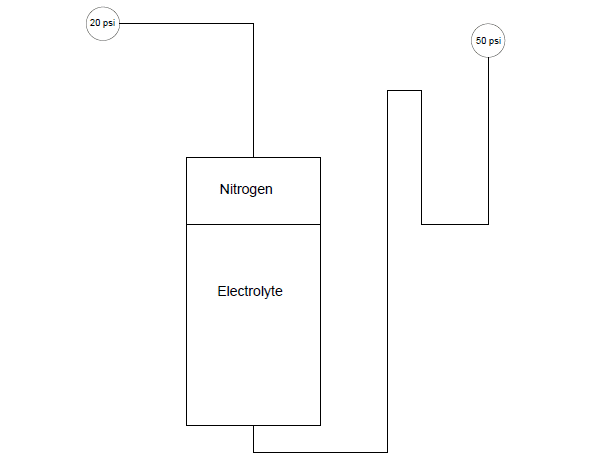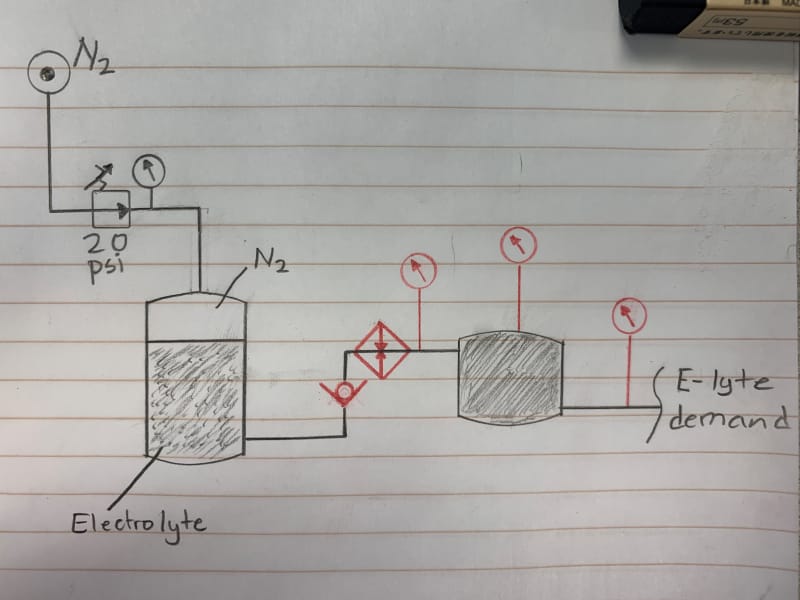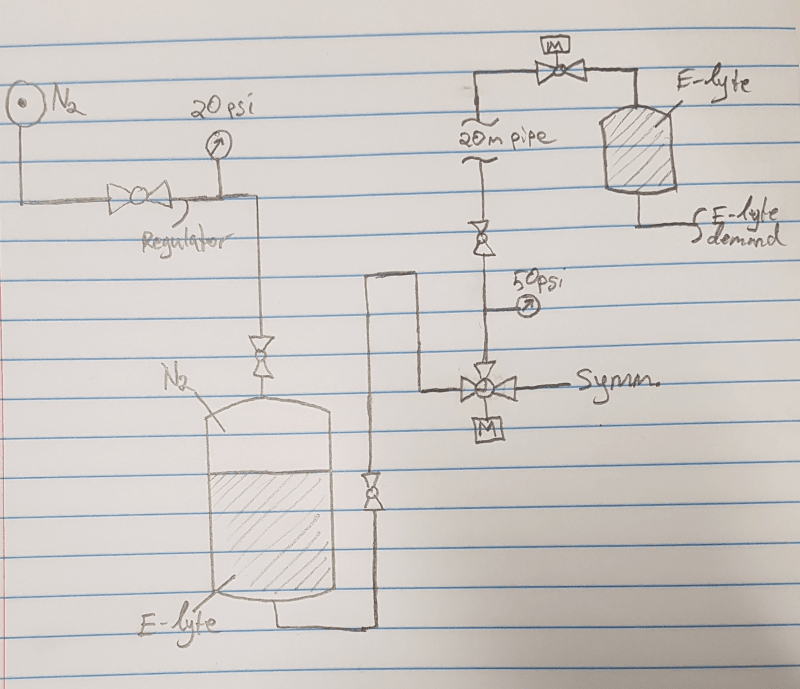baatsman32
Mechanical
I came across a hydraulic system at work which I need to understand fully. We are pumping out electrolyte from a small tank (~20" diameter) with pressurized nitrogen at 20 psi. The electrolyte leaves the tank in a 1/2" pipe. The outgoing electrolyte shows a pressure of 50 psi. I think the original intention was to have the same pressure on the outgoing electrolyte as the nitrogen that we use to push the electrolyte with.
My guess is that we see an increase of pressure of the electrolyte because we are creating a pressure booster since we are pushing with a smaller pressure (20 psi) but with a larger area. Can this be the case? As you probably can tell, I do not have much experience within piping and hydraulics.
Thanks!
My guess is that we see an increase of pressure of the electrolyte because we are creating a pressure booster since we are pushing with a smaller pressure (20 psi) but with a larger area. Can this be the case? As you probably can tell, I do not have much experience within piping and hydraulics.
Thanks!



![[upsidedown] [upsidedown] [upsidedown]](/data/assets/smilies/upsidedown.gif)
